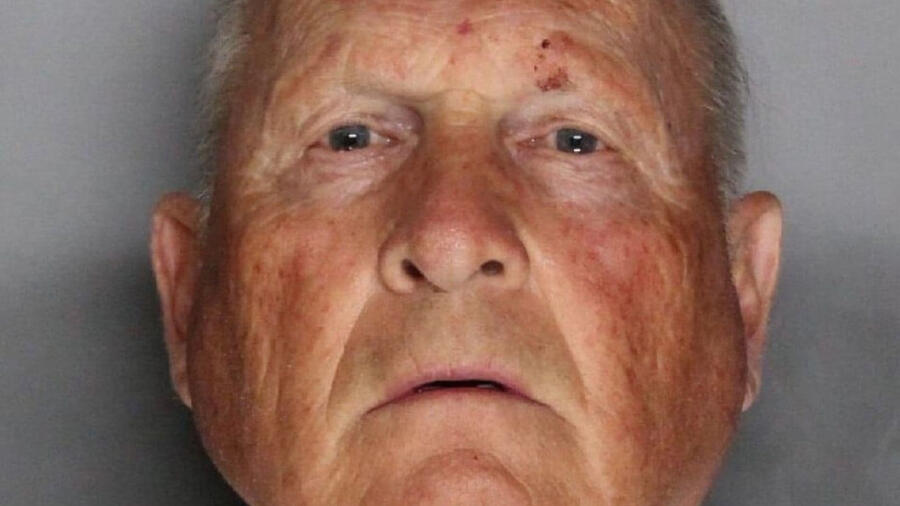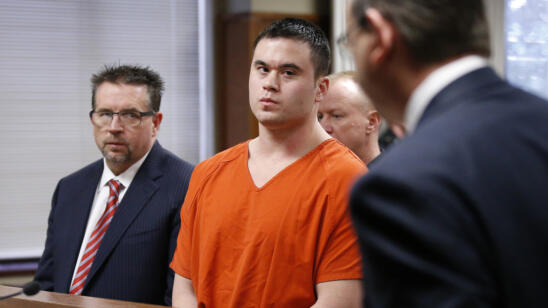One of the country’s most notorious serial killers may have just been caught.
On April 24, 2018 Sacramento police arrested Joseph DeAngelo, saying they believe he is the Golden State Killer, a.k.a. the East Area Rapist: a serial killer who murdered a dozen people and raped at least 45 women in the 1970s and ’80s. (News outlets are currently reporting that he raped anywhere from 45 to more than 50 women.)
DeAngelo was arrested on suspicion of two counts of murder in the cases of Brian and Katie Maggiore, who were killed in February 1978.
The police used DNA from one of the Golden State Killer’s crime scenes and submitted it to a genealogical-testing website to find their way into DeAngelo’s family tree. From there, they discovered one of his relatives, homed in on DeAngelo and—in surveilling him—obtained his DNA off of a discarded item. The match came back positive, leading to DeAngelo’s arrest.
But while the implementation of forensic technology is impressive, perhaps even more striking is how cold the case had run.
According to the charges, DeAngelo—a 72-year-old former cop—stopped his alleged killing spree in 1986, some 32 years before he was arrested at his suburban Sacramento home.
The idea that a serial killer might one day stop without being forcibly detained contradicts the commonly held image of the killer as a psychologically defective slave to compulsion, murdering to relieve an uncontrollable itch. The reality is more complicated, says Dr. Louis Schlesinger, a professor of forensic psychology at John Jay College of Criminal Justice.
“It is compulsive because the sexual instinct itself is very strong,” Schlesinger says, arguing that serial killers who commit “sexual murder” [versus murder without a sexual motivation] do so in response to an “abnormal sexual-arousal pattern.” But that arousal pattern doesn’t mean those urges control the killer—only that they motivate him.
This type of killer isn’t out of control, says Schlesinger: “He could control it, because if there’d been a policeman next to him, he wouldn’t have done it.”
Schlesinger theorizes that the Golden State Killer stopped killing because he felt too old and thus physically incapable of continuing to commit homicide.
“He’s smart enough to know that he places himself at risk for apprehension if he doesn’t stop,” Schlesinger says. “You can’t go climbing through windows at 40, 50 years old…Usually sophisticated offenders realize their limitations after a period of time.”
In the wake of DeAngelo’s arrest, A&E True Crime looks at some of the other high-profile serial killings, where the killer has stopped but currently still remains at large.
The Zodiac Killer
Like the Golden State Killer, the Zodiac Killer targeted victims in California, killing at least five people in the San Francisco Bay Area between 1968 and 1969.
The Zodiac gained particular notoriety by openly mocking the police through the newspapers. During his killing spree, the killer sent 21 letters to The San Francisco Examiner and other local media outlets, including swatches of bloody cloth taken from the victims’ bodies to prove his involvement. He also included cryptograms—coded letters—further infuriating a mystified police department.
All told, authorities confirmed five deaths, although the killer claimed to have killed more than 30 people. The last confirmed murder took place in 1969, and the last correspondence between the Zodiac and the media was a 1974 letter to The San Francisco Chronicle.
Schlesinger argues killers often contact authorities, born from a desire to be recognized as great. In fact, he says, “these people are nobodies. They’ve accomplished nothing, they’re absolute zeroes. They’re deeply inadequate. [But] the American people want their serial killers to be evil geniuses with IQs of 180 who speak four languages, including Aramaic.”
In 2007, David Fincher’s film The Zodiac brought the case back to public attention. The case remains unsolved, but Schlesinger doubts there are any arrests coming soon.
“When a case drops off like the Zodiac case, I think [the killers] were dead. [The Zodiac Killer] could very well be dead.”
The Doodler
It was 1974, and San Francisco’s Castro district was America’s gay mecca. The HIV/AIDs crisis was still years away, and the era of “free love” was in full swing when the Doodler (a.k.a. “The Black Doodler,” for his purported skin color) began terrorizing the community.
A 19 to 22-year-old African American male, who victims said stood between 5 ft. 10 in. and 6 ft. tall, the Doodler would meet his victims at gay bars, where he earned his moniker sketching their likenesses on cocktail napkins.
“The hardest thing with a serial sexual murderer is the abduction,” explains Schlesinger.
Charmed by the drawings, the victims would leave with the Doodler. Their dead bodies would later be found with stab wounds, dumped on the beach or in public parks.
Because the Doodler has yet to be apprehended, the total number of victims is a mystery, with estimates ranging from as low as five to upward of 14. And while authorities had several suspects, the investigation was largely hindered by hesitance on the part of San Francisco’s gay community members to serve as eyewitnesses. With homophobia still rampant, many were simply too afraid of being outed.
By 1975 the killings stopped as mysteriously as they began.
“The reason [serial-murderer cases] are so hard to clear (solve), is because they’re stranger crimes,” Schlesinger says.
The New Bedford Highway Killer
New Bedford, Massachusetts was already down on its luck in the ’80s. The formerly wealthy whaling city been made famous by Herman Melville’s Moby Dick, but was losing manufacturing jobs and beset by a cocaine and heroin epidemic, followed by the spread of HIV among intravenous users.
Then the killings started.
In only a few months between late spring and summer of 1988, at least nine women were killed, their strangled bodies dumped next to highways around the New Bedford area. Two other women who went missing at the time are believed to have fallen victim to the killer.
Schlesinger says that the “rapid sequence” of the New Bedford Highway killings shed light on a commonly held misconception about serial killings.
“We have thought, collectively, that a serial killer strikes and then he deliberates for an extended period of time—six months, a year—and then strikes again. And in the deliberation he’s coming up with ways to elude law enforcement and arrest,” Schlesinger says. “But when you look at temporal patterns in serial sexual homicide, we’ve found that’s not the case. Almost half the offenders kill in rapid sequence. Some kill all of their victims in one rapid sequence, in a spree-like fashion.”
As for the idea that these cases might be cold because the killer relocated, Schlesinger says it’s an unlikely explanation.
“Serial killers who travel about the country are enormously rare,” says Schlesinger. “And that’s true for criminals in general. You commit crimes where you’re comfortable.”
Check out Law & Crime’s ongoing coverage of Golden State Killer suspect Joseph DeAngelo.
Related Features:
Familial DNA and Other New Ways Forensics Is Changing How Murders Are Solved


